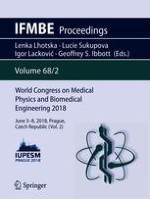2019 | OriginalPaper | Buchkapitel
Influence of Dysgraphia on Kinematic Characteristics of Handwriting in Italian Primary School Children
verfasst von : Giulia Silveri, Federica De Dea, Iolanda Perrone, Agostino Accardo
Erschienen in: World Congress on Medical Physics and Biomedical Engineering 2018
Verlag: Springer Singapore
Aktivieren Sie unsere intelligente Suche, um passende Fachinhalte oder Patente zu finden.
Wählen Sie Textabschnitte aus um mit Künstlicher Intelligenz passenden Patente zu finden. powered by
Markieren Sie Textabschnitte, um KI-gestützt weitere passende Inhalte zu finden. powered by
